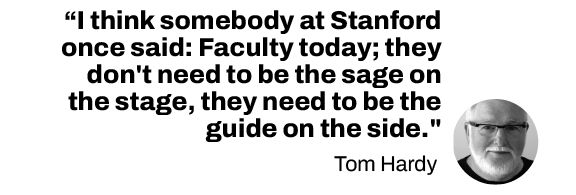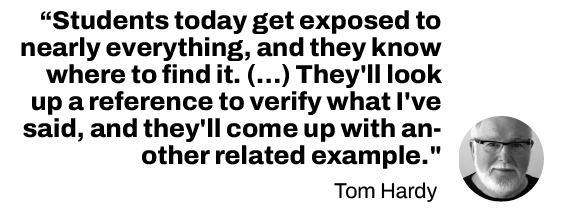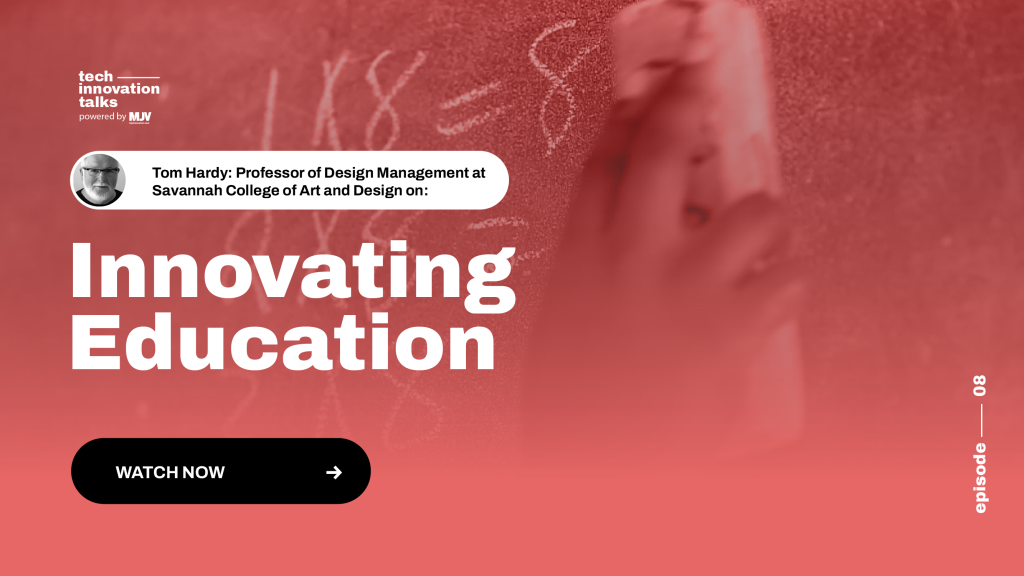Tom Hardy from SCAD on Learning Experiences: “We don’t need to be the sage on the stage, but the guide on the side.”
In this episode of TechInnovation Talks, we sat down with Professor Tom Hardy from SCAD to address some discussions on the future – and the present – of education. How to innovate in education? Read.
Education always seems to deal with the same sort of problems.
Historically students have often been criticized for not fitting into older educational models, but the truth is that if you don’t care about your learning experiences, you are not gonna get much back.
We’re in 2022. Teachers are now the ones vying for attention.
But, this is not a teacher-student issue — it’s a bigger problem, and it’s not new. So how to best utilize technology and innovation to foster the best possible learning experiences for students?
In the latest episode of TechInnovation Talks, we spoke with Tom Hardy, Design Management Professor at Savannah College of Art and Design, who gave us a masterclass on the challenges of teaching (and engaging) modern tech-savvy students! Read on!

A new Learning Experience era in education driven by tech
In recent years, many industries have been forced to adapt to technology-dependent ecosystems. With in-person interactions diminishing due to restrictions at first or pragmatism afterward, some sectors struggle to fully or functionally adapt. One of which is education.
In our conversation, Tom Hardy started talking about the current state of education, them importance of fostering better learning experiences for studentes and how technology has played both a supportive and damaging role in the industry.
Our opening quote above is one that Tom himself remembered hearing at a lecture he attended at Stanford. It proposes a view on education that differs from the traditional perspective that is all too common in the field. Both Tom and Jahnavi agree that modern professors shouldn’t view themselves as academic sages preaching their knowledge but as aids guiding students along their journeys.
Tom related this vision to his own experience, stating:

The Challenge of Teaching Tech-Savvy Studentes
Tom is highlighting that modern-day students that have aged alongside the internet all possess an innate knowledge of its workings. This allows them to conduct their own research and exposes them to more information and experience than students from previous generations.
Jahnavi is herself one of these students. She previously (and coincidentally) studied at SCAD and can attest to this phenomenon currently taking place in education. Teachers are beginning to open up to the idea of taking a back seat role and becoming the wind in their students’ sails instead of manning the helm.
She states as much when she mentions:
“Growing up, we always learned that the best teacher is the one who never teaches. We are at the age or generation where we don’t need any spoonfeeding. Everything is available on the internet.”
SCAD’s action plan: e-learning is on the rise
But becoming the guide on the side isn’t simply a question of refraining from spoonfeeding your students. In order to keep up with the technological advances in the field and the pace of modern tech-savvy students, teachers and institutions alike need to incorporate technology into their daily regimen.
Tom confirms that SCAD has been doing just that:
“SCAD has made some investments in technology over the years, and we have a good cross-section of applications. (…) They’ve had an e-learning program for quite a number of years.”
Within our current context, schools no longer have an option when it comes to providing a fully online education or not. That being said, schools and colleges that have made an effort to offer e-learning programs in the past were one step ahead of the game when the time came to go fully digital.
We don’t want to give you too many spoilers from this episode of TechInnovation Talks. For example, we still haven’t gotten to the juicy bits about the state of education and the challenges facing institutions today. To get all that and more, check out the full interview on our YouTube channel.
Back
